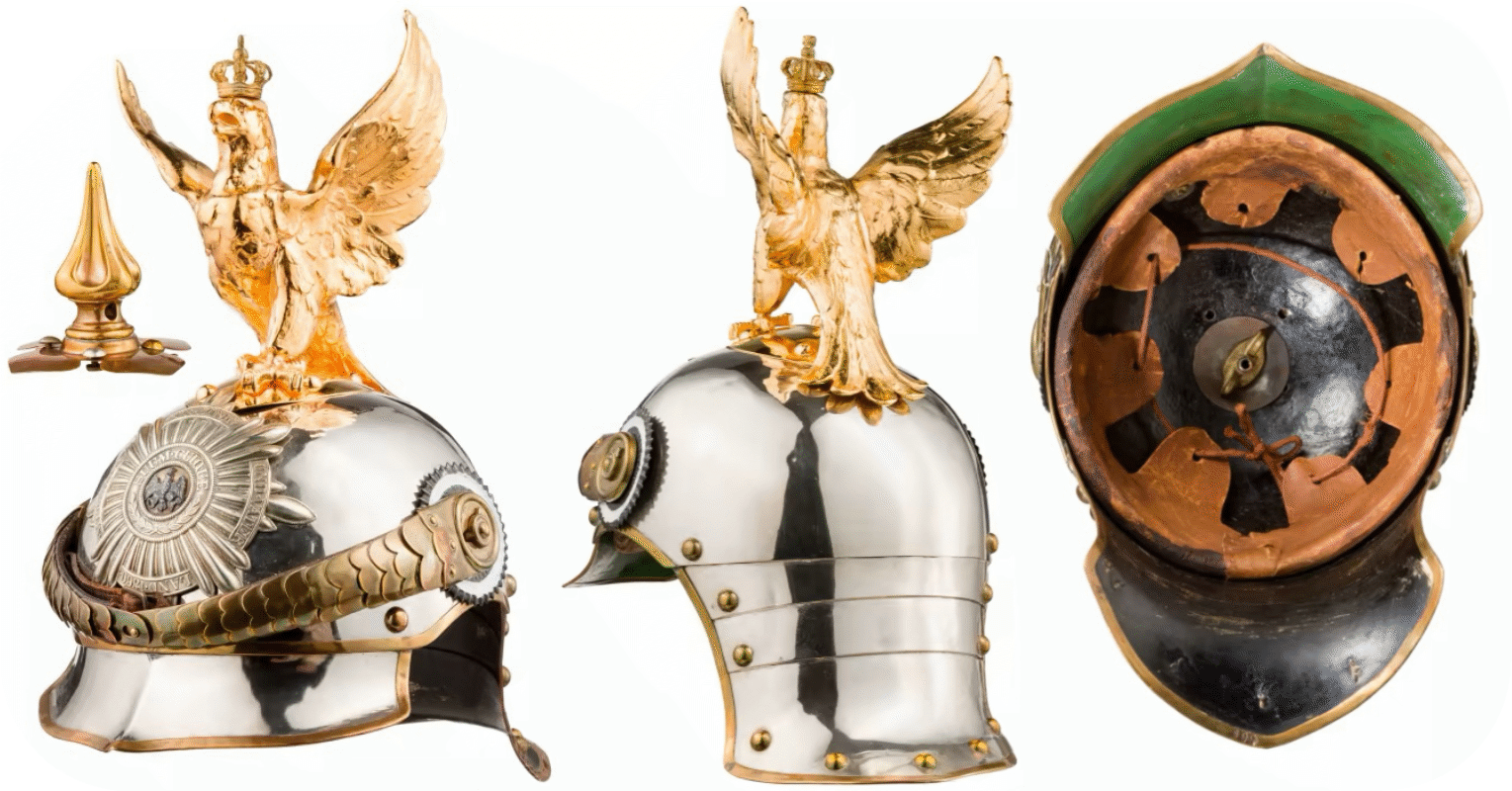The metal Pickelhaube of the Leib-Gendarmes from 1889 to 1918
The Leib-Gendarmes were the bodyguards of the Emperor and King. The uniform of the Leib-Gendarmes was a combination of parts of all cavalry classes to show that they were on duty for all arms and that they received their replacements equally from all cavalry regiments. Thus, until 1889, they wore the helmet of the Cuirassiers, the epaulettes of the Uhlans, the saber of the Hussars, the blue distinguishing color of the Dragoons and the green coller of the „Feldjäger“.
- Except for a short period between 1850/54*, the Leib-Gendarmes wore the helmet of the cuirassiers with fittings made of tombac since 1843. The Leib-Gendarmes of the Garde du Corps and the Army Gendarmes with Guards Star as decoration and to parades with white hair bush. The Leib-Gendarmes of the line army corps wore the line eagle on their helmets.
* In 1850 the unit was briefly disbanded by AKO and its work was to be done by Ordonances, but it was reinstated in 1852 and from 1854 it was again called "Leib-Gendarmes".
1889
However, by AKO of 21.1.1889 the Leib-Gendarmes were given an independent helmet type (Fig. 1) with the following characteristics:
- The polished helmet made of nickel-plated sheet was assembled like the cuirassier helmet with 17 large bolts. These were just like the 0.5 cm wide metal trims made of tombac.
- The squared front visor was slightly bend in the middle and pointed towards the center. The squared rear visor also pointed towards the center at the lower end. The inside of the helmets was like that of the cuirassiers.
- As decoration, the Leib-Gendarmes wore a nickel-silver guard star of the Garde du Corps on the forehead.
- The spike was 4-times fluted and in total 11.0 cm high. The spikebase was 4-times shaped like a leaf and had 4 ventilation holes in the neck. Just like the 14 cm high parade eagle (+crown: 2.5 cm), the spike and spikebase were made of fire-gilded tombac. The parade eagle had an unique shape with spread wings pointing far upwards. It was attached to the helmet using a set of a threaded pin and a large wing nut.
- The chinscales, also made of tombac, measured 3.2/1.4 cm in width. The cockades had a diameter of 6.5 cm.
1894
1915
As with all the other troops, a new helmet M1915 was introduced for the Leib-Gendarmes on 21.9.1915, that was characterized by the following features:
- The 11,0 cm high spike should be removable and not to be worn for maneuvers or field service, but left in garrison. Therefore, a two-piece helmet cover was introduced to replace the one-piece cover.
- In maneuver or field service, a leather chinstrap with the M1891 rosettes was worn. Chinscales were put on for all occasions when an cover was not worn. However, special chinscale covers, made of the same material as the helmet covers, also appear to have been permitted.
- The cockades kept a diameter of 6.5 cm. If some metal war helmets were equipped with smaller cockades this was surely only due to the lack of material during the war, because the middle part of the cockades would be almost invisible behind the wider chinscales. However, according to regulations, all areas of the cockades had to be clearly visible. If the monarchy had not perished after the war, these imperfections would certainly have been corrected.
